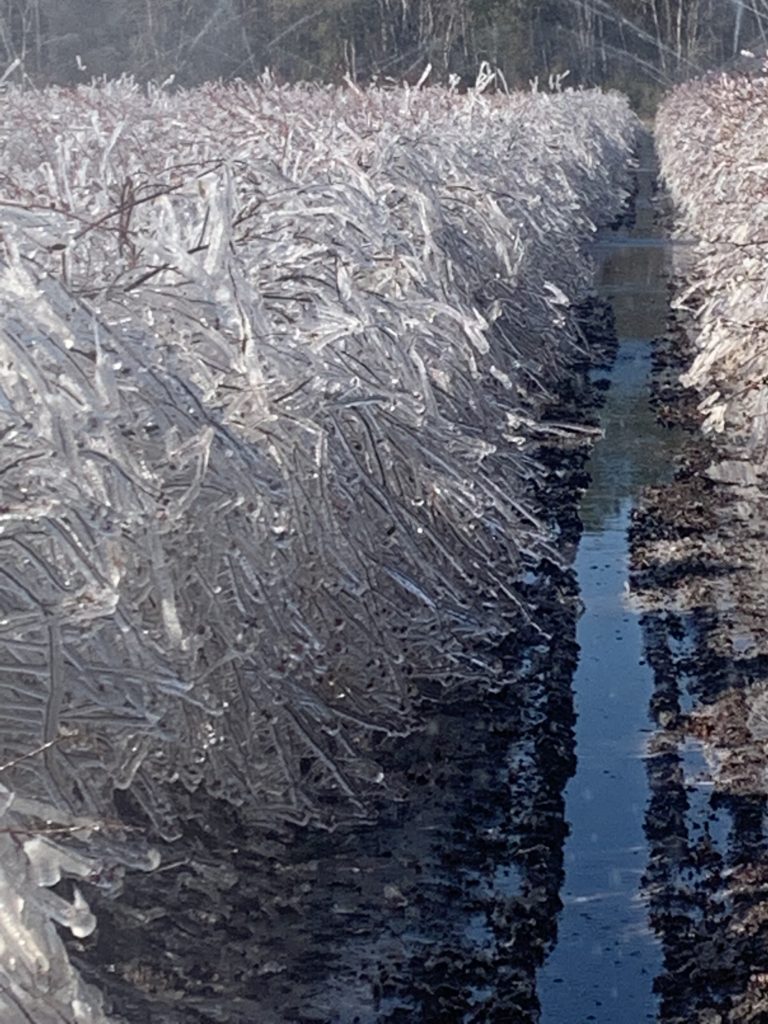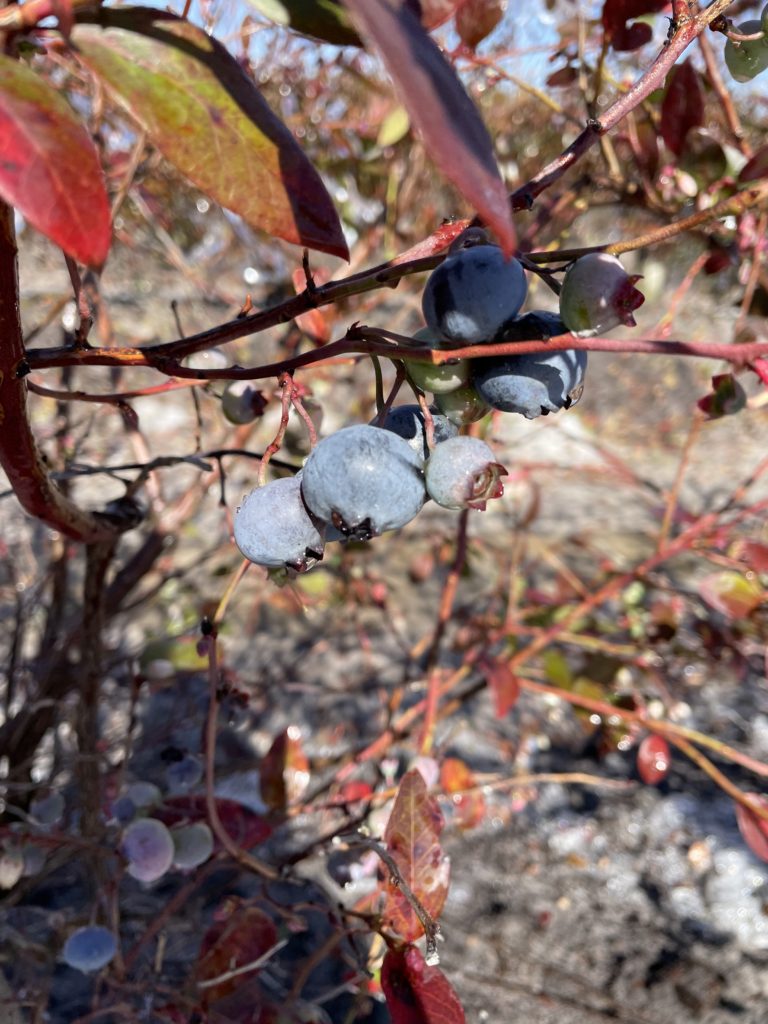By Clint Thompson

Frigid temperatures this past weekend had blueberry growers across the Southeast on high alert. Some applied frost protection, others did not. Some emerged mostly unscathed, while others experienced some damage.
The full extent of the impact will not be fully known until later this week, says Renee Holland, University of Georgia Cooperative Extension area blueberry agent and Ryder Godfrey, a blueberry farmer in Homerville, Georgia.
“Initial reports, we feel pretty good about what we can see. After a big run like that, you need a couple of days with the sun out on it to see what the exact damage is. Right now, everything looks pretty good,” said Godfrey, who produces 300 acres of blueberries.
Ryan Atwood, who lives in Mount Dora, Florida, farms 56 acres of blueberries and manages another 350, said the impact will likely depend on where the growers are located and what varieties they have.
“I went to all the farms that I own or manage (Sunday). We got a little bit of damage, not much. The Williston farm, which is the farthest north, had the most damage. Part of that was when we had to turn on the irrigation, it was blowing wind pretty good and made a lot of ice on our western side and blew some bushes out of the ground,” Atwood said. “They get heavy with ice and then uproot. We’ve got to stake some bushes up. It creates work and damages some plants to where you lose some plants. It wasn’t major damage.”
Atwood said temperatures dropped to between 20 and 22 degrees Fahrenheit (F) in the Brooksville, Florida area Saturday night/Sunday morning, while his farms mostly experienced temperatures between 23 F and 26 F.

“I’ve got a lot of set fruit. I’ve got fruit that’s on the bush so 32 degrees (Fahrenheit) is my critical temperature. That’s my temperature to which damage can occur to my fruit,” Atwood said. “It got cold for sure.”
It was chillier conditions in Southeast Georgia where Godfrey is located.
“We’ve seen some temperatures as low as 20 on our farm and heard some reports as low as 18 in the area,” Godfrey said.
This year’s blueberry crop was ahead of schedule due to warmer temperatures in December. It accelerated development, especially the early varieties, which were most at risk.
“If we saved that crop, there will be some fruit picked in March which will be about as early as I’ve ever seen it harvested. There’s a bunch at different stages; 3, 4 and a fair amount of 5, 6 and 7s, with 7s being a green fruit,” Godfrey said. “We’ve got to walk through fields and stand some plants back up, but outside of that, what we were looking at late (Sunday) was still good and white. The berries that we saw and cut into had good white seeds in them.
“Initial reports, it’s looking pretty good.”









